Sheffield United have been one of the most refreshing sides to have been promoted to the Premier League in recent years. Chris Wilder has managed to generate a lot of goodwill due to the uncompromising nature of his team, along with his revolutionary overlapping centre-backs. The Blades had got off to a decent start to life in the top-flight, with two wins, draws and losses from their first six matches. Having managed to beat Everton and hold Chelsea to a draw away from home, this match against league-leaders Liverpool would be their toughest test yet. Liverpool came into this game on the back of a 15-match winning streak in the Premier League, but Jurgen Klopp was well aware that this would be an extremely tough test for his players. As our analysis will show, Liverpool were lucky to come away with all three points, as the Blades proved to be more than a match for the European champions.
In this tactical analysis piece, we will look at Sheffield United’s and Liverpool’s tactics and their approach to this game.
Lineups
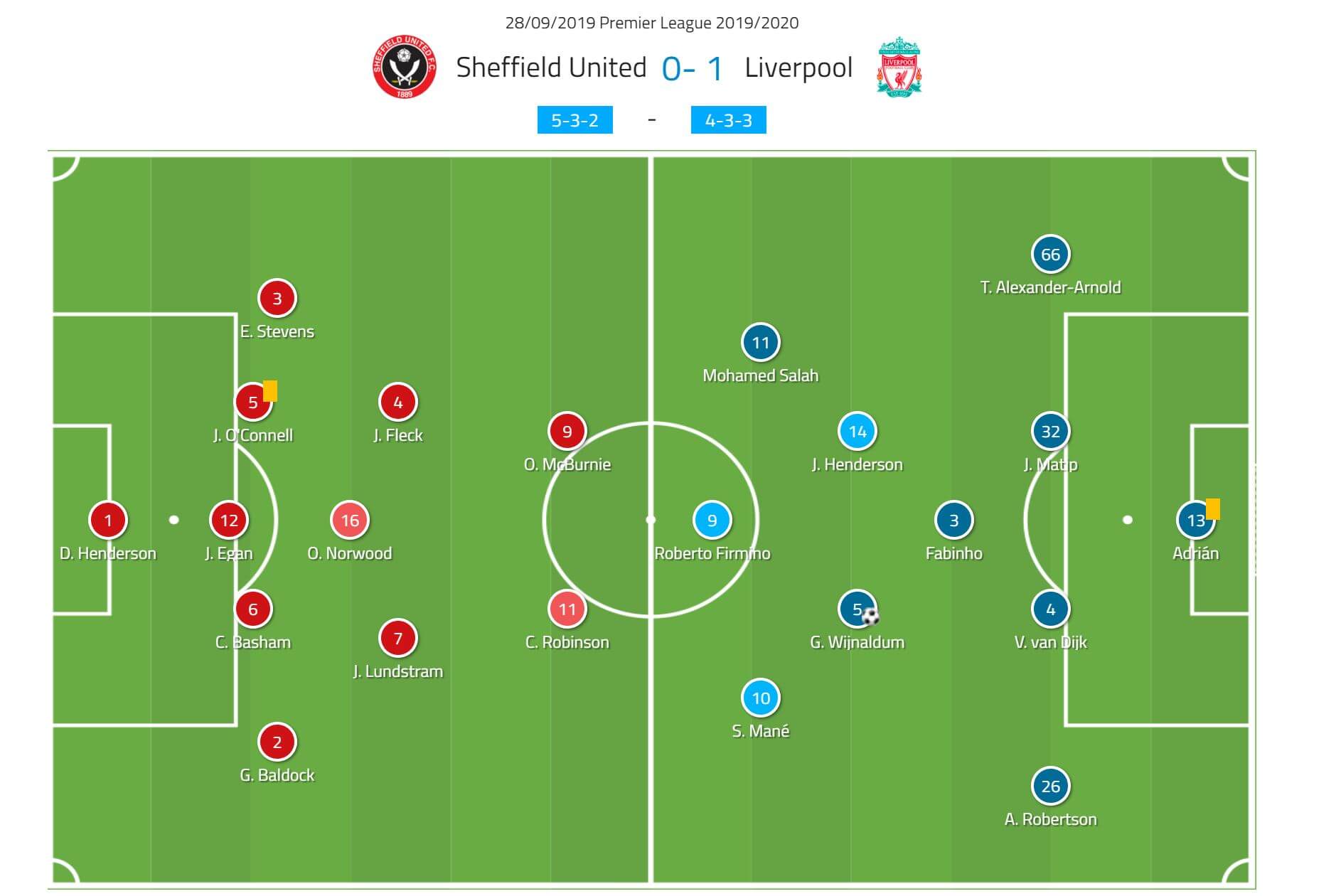
Chris Wilder named an unchanged side from the previous weekend in his now-standard formation of 3-5-2, with Callum Robinson and Oliver McBurnie preferred to Lys Mousset up front.
Jurgen Klopp, too, named an unchanged team from the win over Chelsea last weekend.
Sheffield’s defence leaves Liverpool short of ideas
For all the talk and news around the Blades’ tactic of pushing up the outside centre-halves when in possession, their recent success has been built on the rather more traditional qualities of their defenders. Wilder has an extremely well-drilled side at his disposal, with his willingness to stick with the players that brought the club up to the Premier League being rewarded due to their knowledge and understanding of his system and style of play. Sheffield were an extremely solid defensive unit in this match, playing in a compact shape without the ball to deny Liverpool space between the lines –
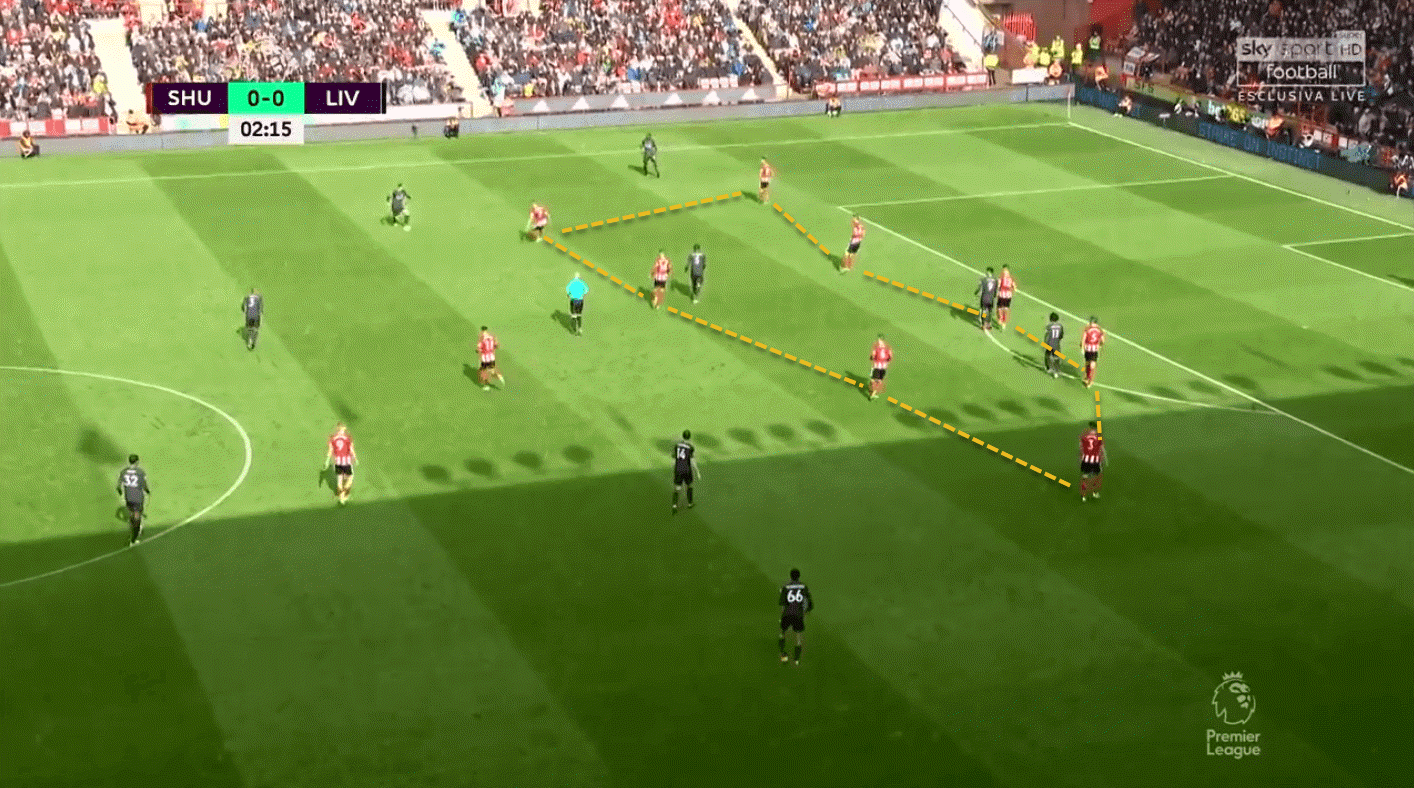
The United midfield of John Lundstram, John Fleck and Oliver Norwood sat deep and covered central areas, forcing Liverpool to go wide due to a lack of penetration through the centre. While this tactic did allow Liverpool a lot of space on the flanks, especially for the full-backs, it ensured that their famed front three were starved of quality service from midfield.
Additionally, Sheffield’s defenders were extremely adept at picking up runs from deep and covering for each other. Liverpool would attempt to switch the play from one flank to the other to try and catch out the home side’s defence, but Sheffield’s shape and the awareness of their defenders made it difficult for the Reds to do so –
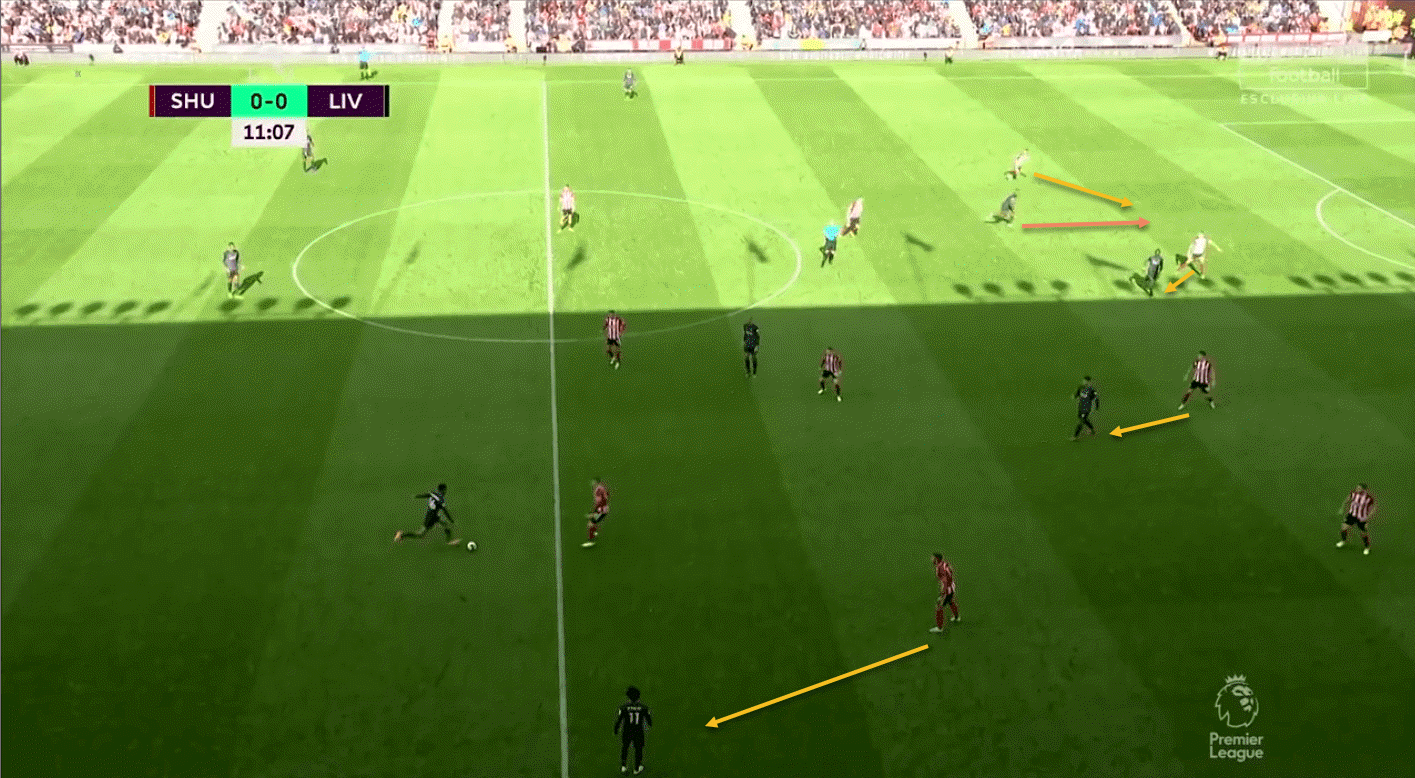
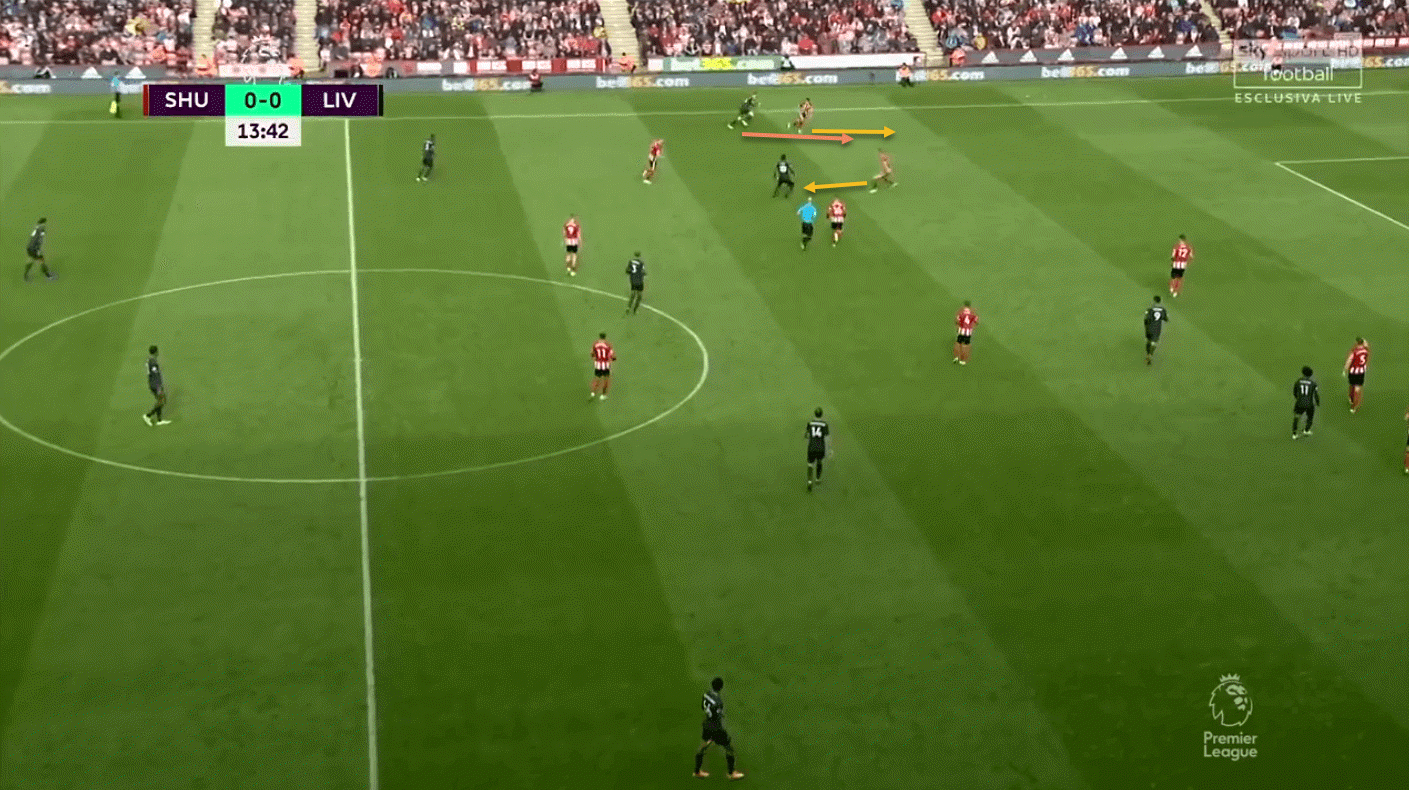
The Blades’ defence were quick to shift from side to side to counteract any switch of play by Liverpool, with the result that the two full-backs, Robertson and Trent Alexander-Arnold, rarely managed to get in behind the home side’s defensive line.
One tactic Liverpool seldom used was the long ball; it may have been more effective against Sheffield’s defence, as this one example in the first half showed –
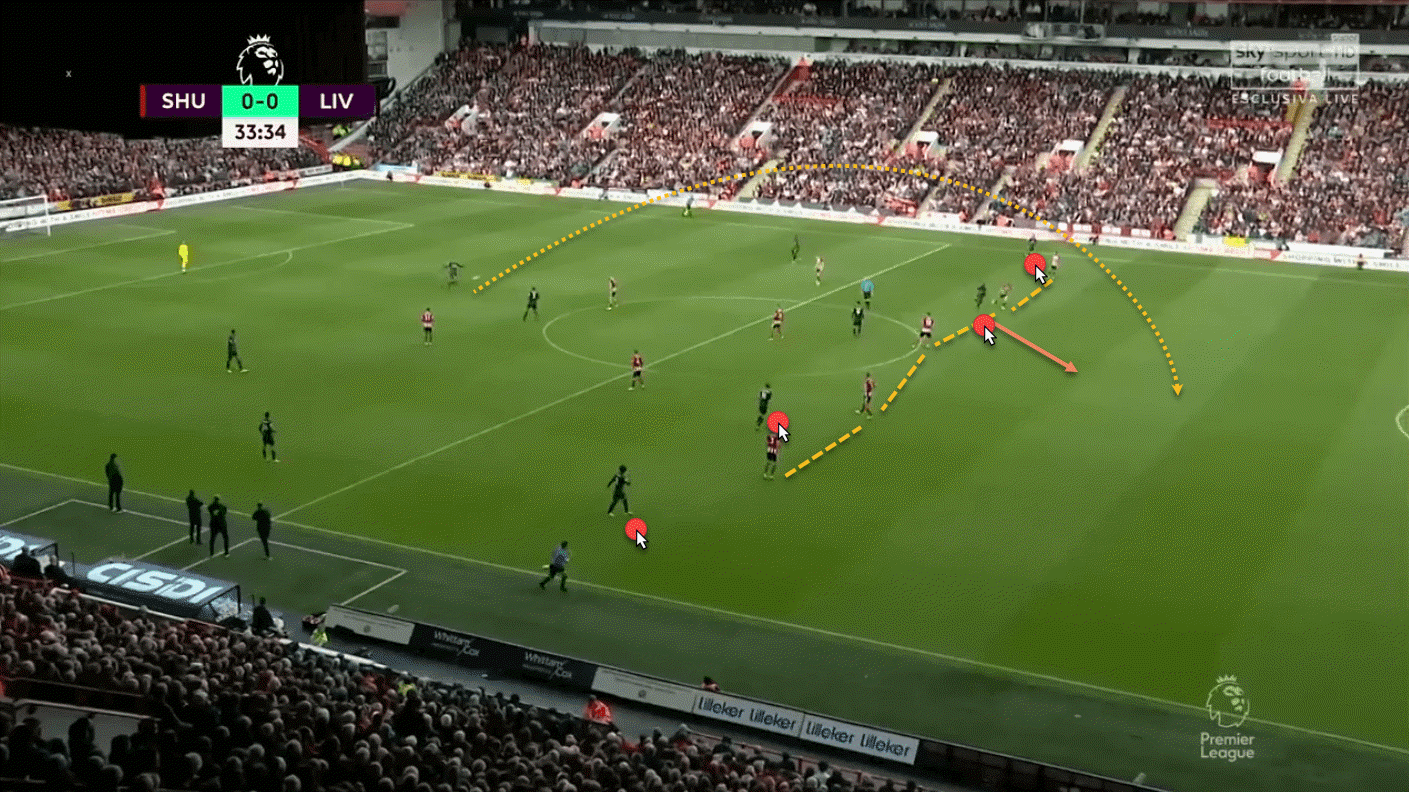
Liverpool could have probably mixed it up a little more to try and unsettle the Blades’ defence; nevertheless, the home side did a fantastic job in keeping their opponents quiet.
Sheffield’s overlapping centre-back
That is not to say that the Blades did not have their chances. They managed 12 shots on goal to Liverpool’s 16, and 11 of those came from inside the penalty area. The fact that they did so with only 29% possession tells you that they were extremely quick and clinical on the counter-attack, and one specific tactic was key to this.
Liverpool, under Klopp, have a very specific approach which sees them push both full-backs high up the pitch, to allow Mané and Salah to come inside into central areas. Width and attacking impetus is provided by the full-back duo, and the success of this tactic can be seen from the fact that Alexander-Arnold and Robertson notched 23 assists between them in the league last season. However, of these two, Alexander-Arnold especially has a tendency to get caught up the field and leave space behind him, and this was a very targeted plan by Wilder.
Instead of having both centre-backs overlap, Sheffield focused play down their left flank, where Jack O’Connell got forward in support of Stevens from his left-sided berth in defence.
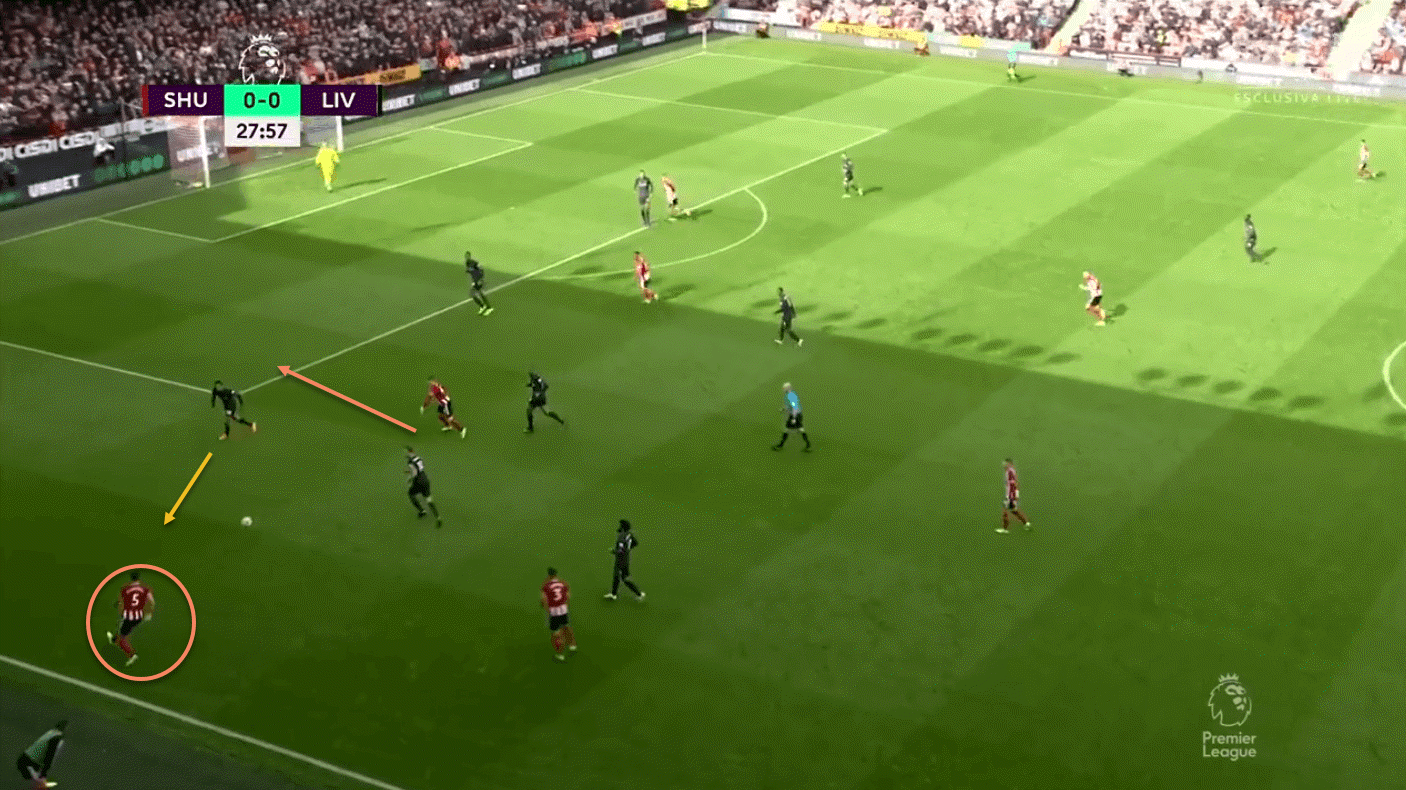
While O’Connell would move forward down this flank, Fleck would also drift into wider areas to create overloads. The result was that the trio of O’Connell, Fleck and Stevens would create passing triangles and get in behind Alexander-Arnold with quick one-twos.
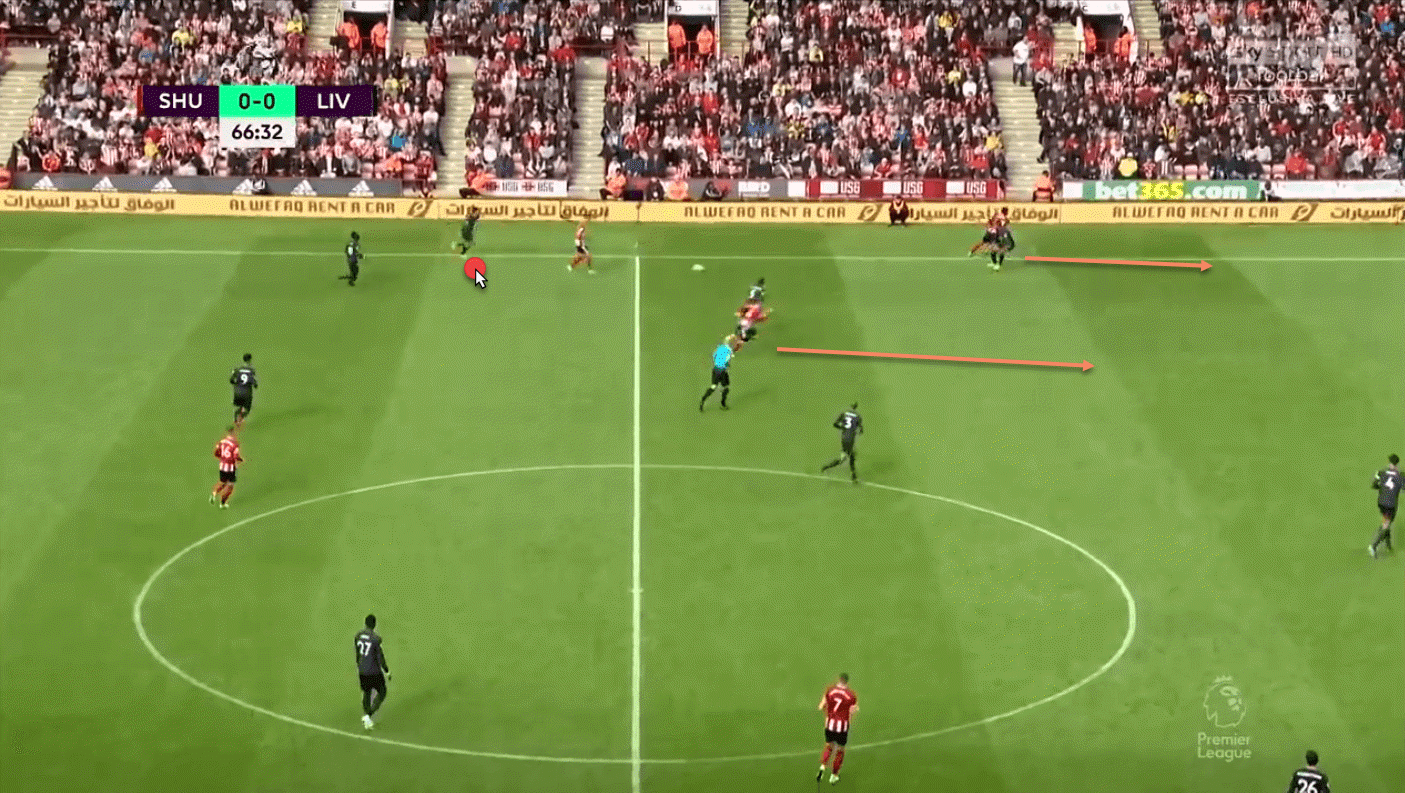
In fact, Fleck’s movement towards the left flank created a big chance for Sheffield to equalise, when he played a brilliant ball from a wide position to the substitute Leon Clarke who could only balloon the ball over the bar.
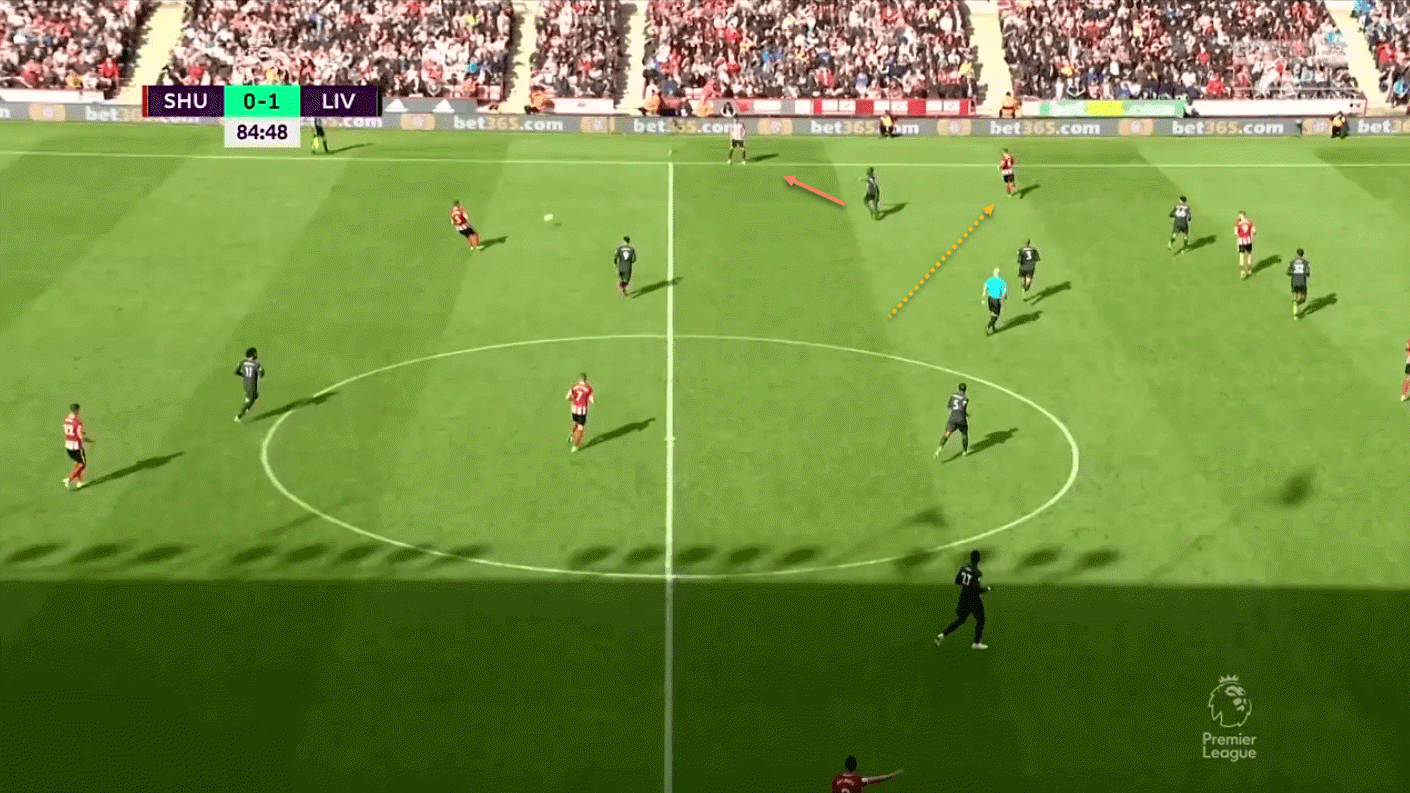
This focus down Liverpool’s right flank was aided by the movement of the two strikers. They consistently positioned themselves in the channels, between the centre-backs and full-backs, and were tireless in terms of chasing long balls played into those channels.
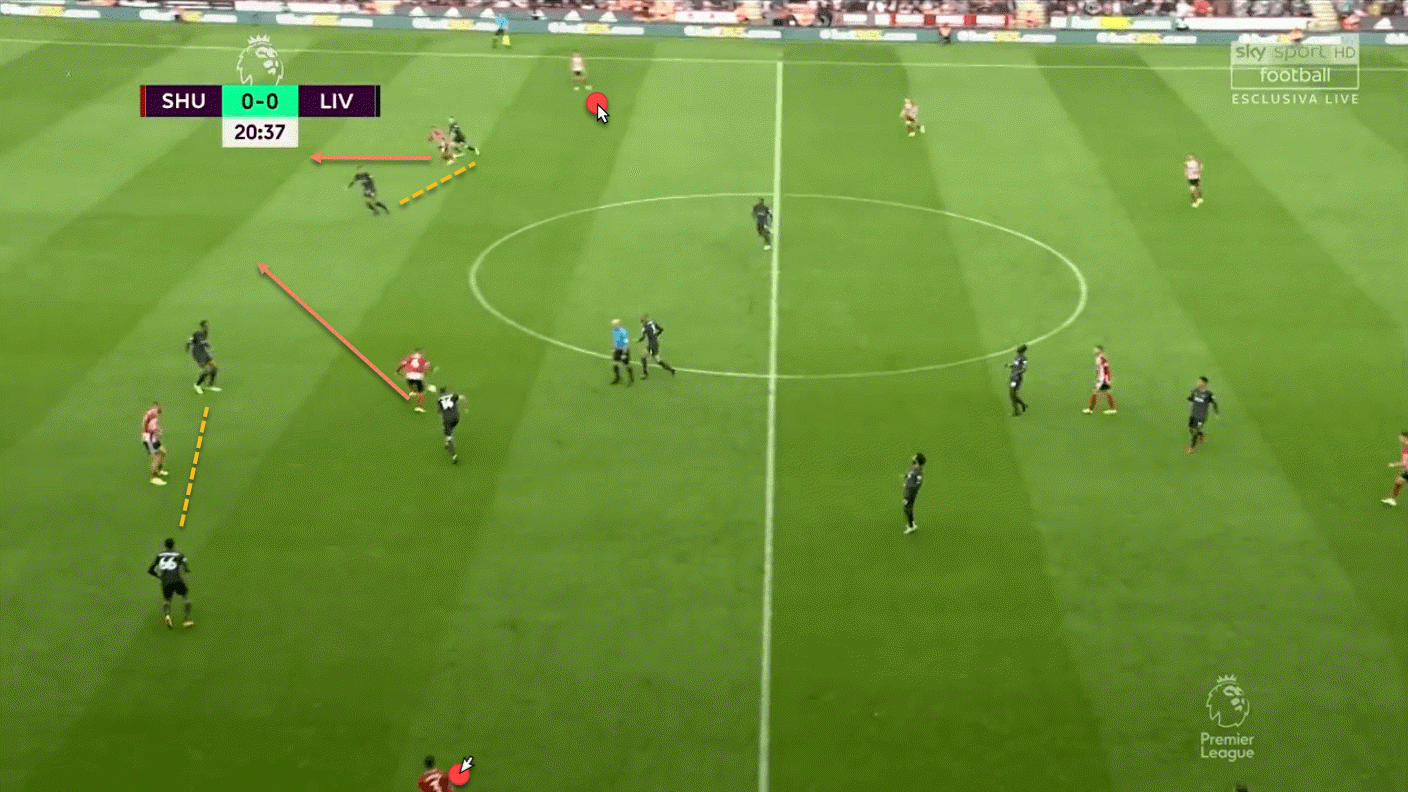
Sheffield were extremely unlucky to lose this game, as they managed to keep Liverpool out and were dangerous on the counter-attack as well.
Conclusion
The Blades should be disappointed with the result, but not the way they played. They managed to go toe-to-toe with the European champions and were only undone by a goalkeeping error. Chris Wilder, while stating otherwise in the post-match briefing, would be extremely proud of his players, and on this showing, Sheffield should comfortably stay up this season, and they will bloody a few noses on the way.
For Liverpool and Klopp, this was a scrappy, hard-fought win. Klopp admitted that his side only deserved a draw from this game, but they got the rub of the green which is so often said to be the hallmark of a champion side. His team struggled to break Sheffield down, and while the home side’s exact tactics are not transferable, there was enough in this display for the rest of the league to take note of and use in their own encounters against Liverpool.

If you love tactical analysis, then you’ll love the digital magazines from totalfootballanalysis.com – a guaranteed 100+ pages of pure tactical analysis covering topics from the Premier League, Serie A, La Liga, Bundesliga and many, many more. Buy your copy of the September issue for just ₤4.99 here




Comments